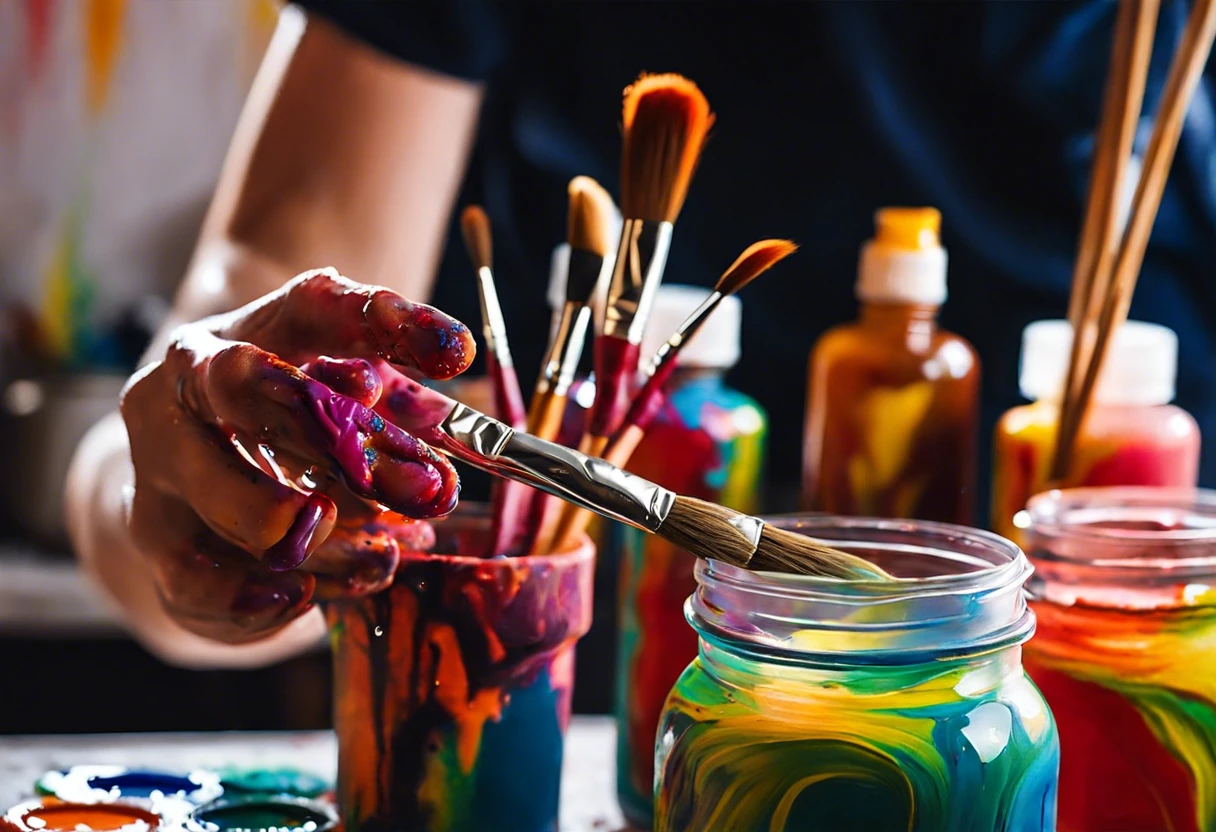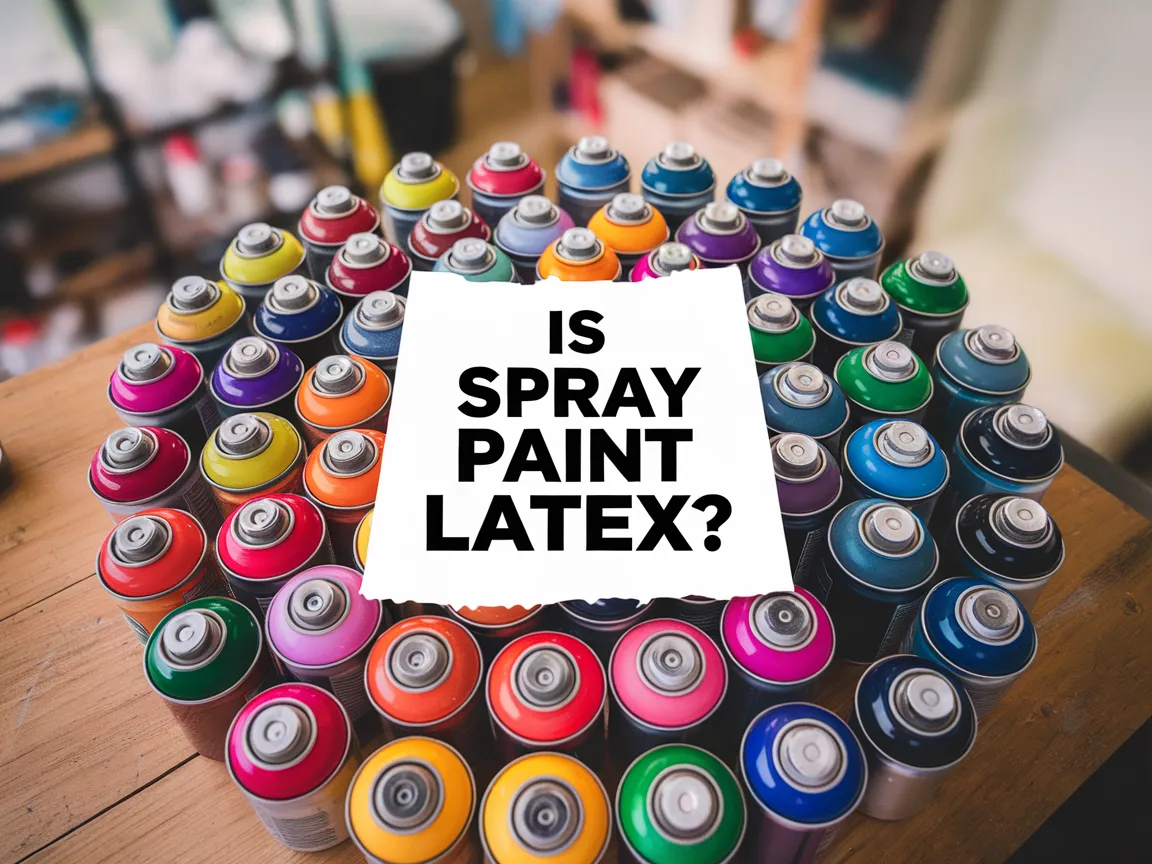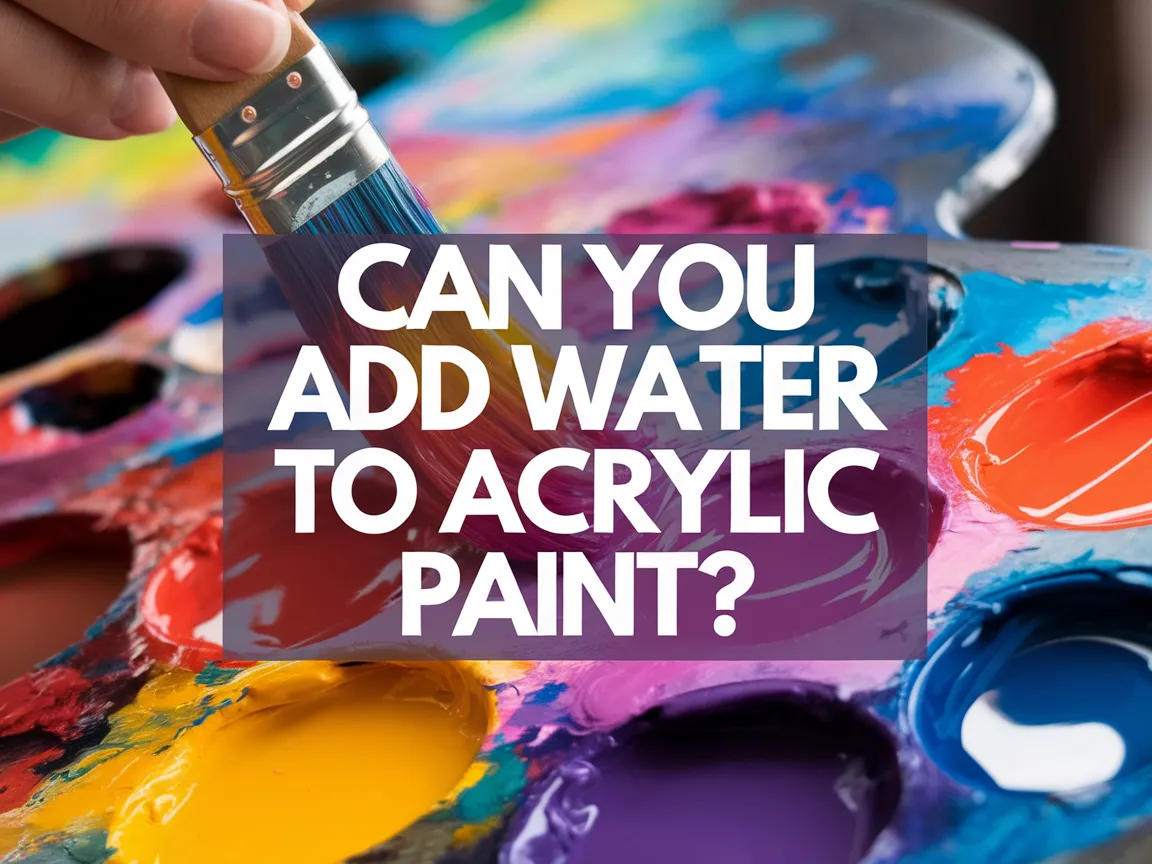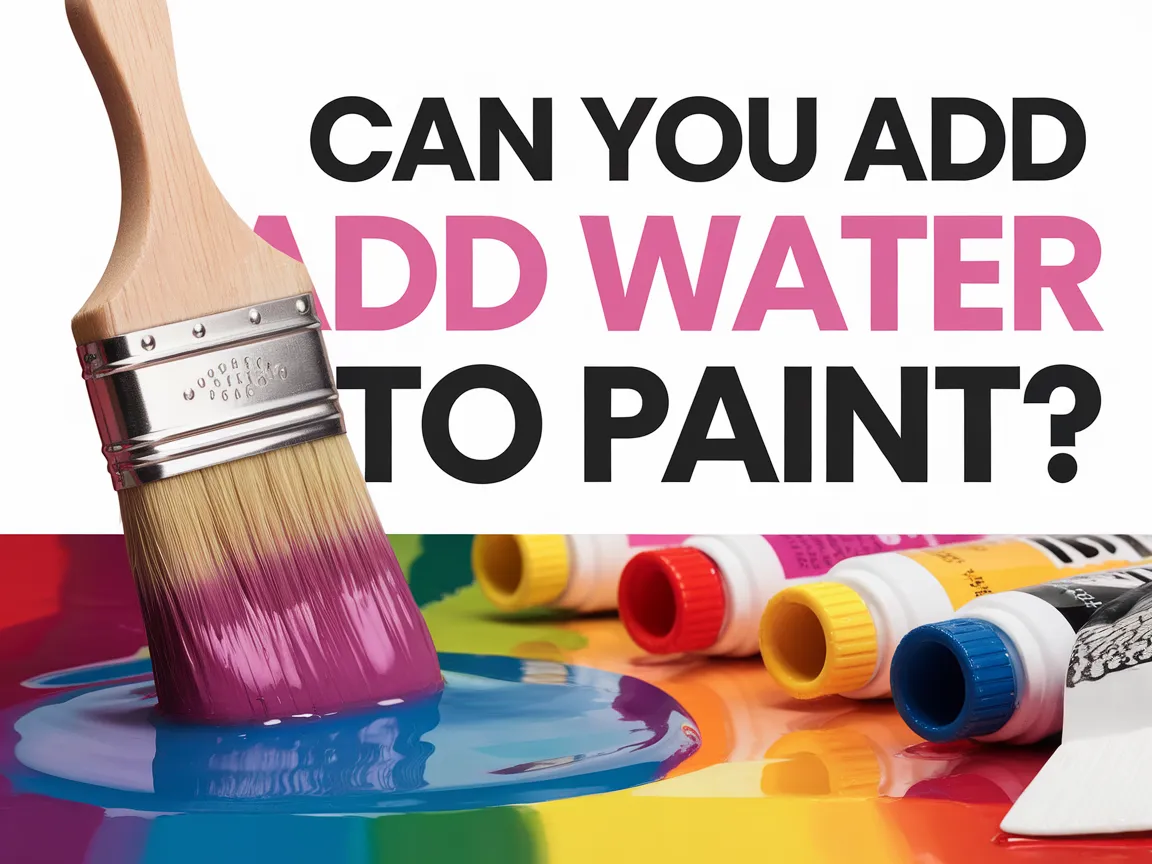Can You Make Acrylic Ink From Acrylic Paint?
Published on: March 8, 2025 | Last Updated: January 7, 2025
Written By: Alisha Winters
Contents
- 1 Can You Make Acrylic Ink From Acrylic Paint?
- 2 What is Acrylic Ink?
- 3 Essential Preparation Before You Start
- 4 Steps to Create Acrylic Ink From Acrylic Paint
- 5 Different Types Of Acrylic Ink You Can Create
- 6 Factors Affecting the Quality Of Your Acrylic Ink
- 7 Common Issues When Making Acrylic Ink From Acrylic Paint
- 8 Finishing Touches to Enhance Your Acrylic Ink
- 9 Creative DIY Project Ideas Using Acrylic Ink
- 10 Comparing Acrylic Ink to Other Inks
- 11 Benefits of Using Acrylic Ink Over Other Options
- 12 Frequently Asked Questions About Making Acrylic Ink
- 13 Conclusion
- 14 Useful Resources
Can You Make Acrylic Ink From Acrylic Paint?
Yes, you can make acrylic ink from acrylic paint! Just mix your paint with water or medium to thin it down. Aim for a ratio of 1:1 for good consistency. This way, you’ll create a fluid ink perfect for your artwork!
What is Acrylic Ink?
Acrylic ink is a fluid medium made from polymer resin. It contains pigments suspended in a water-soluble binder, offering vibrant colors and quick drying times.
Now, let’s consider whether you can make acrylic ink from acrylic paint. I once tried mixing leftover paint with water and dyes. The results? Interesting, but not as fluid as real acrylic ink!
I’ll never forget my first experience with acrylic painting mediums. It flows beautifully on paper! Compared to paint, making your own acrylic ink can be tricky due to its consistency and the longer drying time of acrylic paint—often longer than straight ink. You need to find the right ratio of paint and water for a usable mix; aim for 70-80% water if you’re blending.
The Finishing Touch
A freshly painted wall is a blank canvas. The best way to bring your room to life is with a single piece of statement art that ties everything together.
Browse Wall Art at Big Wall DecorEssential Preparation Before You Start
What do you need to gather for your project?
- Acrylic Paint: Use acrylic paint like Liquitex Basics or Golden Heavy Body. These brands offer quality pigmentation essential for making your acrylic ink.
- Water: You’ll need about 100 mL (3.4 Fl Oz) of distilled water. It helps achieve the desired consistency for your DIY ink.
- Mixing Container: Use a glass jar or cup. A Mason jar is ideal for easy mixing and storage of your finished ink.
- Stirring Tool: Get a palette knife or wooden stirrer. This will blend the paint and water thoroughly for smooth ink.
We covered essential preparation steps here. We will now cover the process for creating acrylic ink from acrylic paint.
Also See: Can You Paint Oil-based Paint Over Oil-based Paint?

Steps to Create Acrylic Ink From Acrylic Paint
Here are the essential steps for making acrylic ink from acrylic paint.
-
Choose the Right Acrylic Paint
Select high-quality acrylic paint for better ink performance. Premium brands often yield richer color saturation and better fluidity, which are vital for creating ink.
Avoid cheap options; they may impact consistency, and you’ll get what you pay for. Look for paint labeled ‘fluid acrylic’ for a ready-to-use formulation.
-
Mix the Thinner With Acrylic Paint
Combine water or acrylic medium with your acrylic paint in a clean container, using a 1:1 ratio. I usually mix 8-12 parts paint to 1 part water for the best results.
For those experimenting, adjust the mixture to find your desired fluidity. If it seems too thick, add more water or medium until the ink reaches your preferred consistency.
-
Prepare the Mixture
Once you have the desired ratio, mix thoroughly. An immersion blender improves the mixing process, ensuring a smooth, even texture.
Let it sit for about 5-10 minutes to allow air bubbles to escape. A well-mixed ink flows better through your pens and brushes.
-
Test the Ink Consistency
Take a small amount of ink and test it on a piece of paper. It should flow nicely and color evenly; the ideal ink glides smoothly without clumping or streaking.
You can adjust the mixture by adding paint for thickness or more water for a runnier consistency. Don’t hesitate to find that ideal balance before starting your project!
We’ve wrapped up the steps for making acrylic ink from acrylic paint here. Let us turn our attention to different types of acrylic ink you can create.
Different Types Of Acrylic Ink You Can Create
Let’s explore the different types of acrylic inks: Fluid, Heavy Body, Ink, and Transparent.
-
Fluid Acrylic Ink
This type is thin and runny, ideal for detail work. It flows easily for delicate lines and washes, making it perfect for techniques like pouring or airbrushing.
-
Heavy Body Acrylic Ink
This type is thick and creamy, providing texture and dimension to your work. If you want a strong presence on the canvas, this type stands out!
-
Acrylic Ink
This versatile option combines fluidity with vibrant color. It acts like ink but offers unique properties of acrylic paint, such as resistance to fading.
-
Transparent Acrylic Ink
This type allows light to pass through, creating beautiful layers. It’s excellent for glazing techniques, letting earlier colors shine through as you build your masterpiece.
I’ve learned through hands-on experience that fluid acrylic ink is my favorite. Its flow allows me to create stunning, detailed artwork with ease.
You should now have a good understanding of various acrylic ink types and their uses. In the next part, we’ll discuss quality-affecting factors.
The Finishing Touch
A freshly painted wall is a blank canvas. The best way to bring your room to life is with a single piece of statement art that ties everything together.
Browse Wall Art at Big Wall DecorFactors Affecting the Quality Of Your Acrylic Ink
What factors influence the creation of acrylic ink from regular acrylic paint?
-
Paint Quality: High-quality paint produces better ink. With cheap paint, expect poor results.
-
Mixing Ratio: The right ratio of paint to water is crucial for consistency.
-
Color Pigment: The pigment’s intensity affects the richness of your ink’s hue.
-
Water Temperature: Warm water helps the paint combine smoothly, creating a more fluid ink.
So far we covered the elements influencing acrylic ink quality. Let’s look at common problems encountered when creating acrylic ink from paint.

Common Issues When Making Acrylic Ink From Acrylic Paint
My friend once tried to make acrylic ink from acrylic paint but ended up with a sticky mess. The paint diluted too much, affecting the pigment density.
To avoid this, mix one part paint with three parts water. Use a fine mesh strainer to filter out clumps, ensuring a smooth ink consistency. Know your ratios!
Finishing Touches to Enhance Your Acrylic Ink
After making ink from acrylic paint, let it cure in a well-ventilated area for 48 hours. Store it at room temperature, around 20°C (68°F), for optimal consistency.
Inspect your acrylic ink for separation or lumps. If you find any irregularities, use an immersion blender set to 3000 RPM to achieve a smooth mixture; it’s crucial!
If this isn’t your first attempt, consider adding 0.5 g of silicone oil per 100 ml of ink. This helps reduce clogging in high-volume pens, ensuring smoother application and less frustration!
Creative DIY Project Ideas Using Acrylic Ink
How about making vibrant resin coasters? You can also try your hand at abstract wall art using acrylic ink! Both projects are fun and truly unique.
For the coasters, you’ll need acrylic ink, resin, and a silicone mold. Expect to spend around $30 (USD) and a couple of hours to get everything done. Wall art can cost about $20 (USD) and may only take an afternoon! Some artists even explore creative techniques like animal-inspired painting methods.
Now, can you make acrylic ink from acrylic paint? Absolutely! You can mix acrylic paint with a medium like water or glycerin to achieve a more fluid consistency. Or consider using alcohol for a watercolor effect—talk about stepping outside the box! When experimenting with acrylic paint techniques, it’s crucial to be aware of potential chemical interactions that might damage your surfaces carefully.
The Finishing Touch
A freshly painted wall is a blank canvas. The best way to bring your room to life is with a single piece of statement art that ties everything together.
Browse Wall Art at Big Wall Decor
Comparing Acrylic Ink to Other Inks
Let’s see how acrylic ink stacks up against other popular inks.
| Type of Ink | Characteristics | Usage | Drying Time |
|---|---|---|---|
| Acrylic Ink | Fast drying, water-resistant, vibrant | Mixed media, calligraphy, art applications | 30 minutes to 1 hour |
| Watercolor Ink | Translucent, fluid, blends easily | Watercolor painting, delicate washes | Varies, longer in thick layers |
| India Ink | Rich black, permanent, waterproof | Inking, drawing, calligraphy | Dries quickly, permanent upon drying |
| Gel Ink | Opaque, smooth flow, vivid colors | Writing, drawing, crafts | About 5-10 minutes |
Benefits of Using Acrylic Ink Over Other Options
Why should you consider acrylic ink for your projects? Here are some benefits:
- Versatility: Acrylic ink works well on various surfaces like paper, canvas, and wood.
- Easy Cleanup: Use soap and water to clean tools right after use.
- Color Vibrancy: Acrylic inks tend to retain brightness, even after drying.
- Long-Lasting: When stored correctly, your acrylic ink can have a shelf life of up to a year!
Frequently Asked Questions About Making Acrylic Ink
What Can I Use Instead Of Thinner for Acrylic Paint?
You can use rubbing alcohol (Isopropyl Alcohol) instead of thinner for acrylic paint. Rubbing alcohol helps in reducing viscosity and offers a smooth texture, which is key for making acrylic ink. Aim for a mixture ratio of 30% alcohol to 70% paint for best results.
Can I Use Any Type Of Acrylic Paint?
No, you shouldn’t use just any type of acrylic paint. Tube acrylics and fluid acrylics work best because they’re formulated for good flow and mixing with other mediums, such as water or alcohol, enhancing ink performance. If you’re curious about the specific file formats compatible with digital painting tools, check out 3D file format compatibility details.
How Long Will My DIY Acrylic Ink Last?
Your DIY acrylic ink can last several months to a year when stored properly. Keep it in an airtight container at room temperature (Around 20°C or 68°F) away from light, as exposure can cause rapid degradation. If you want to enhance your ink’s visual appeal, you might consider adding glitter to your paint mixture.
Can I Use Water to Thin My Acrylic Paint for Ink?
Yes, you can use water to thin your acrylic paint for ink. However, use it sparingly; typically, mix no more than 30% water to maintain color integrity and consistency when crafting your ink.
What Are the Best Surfaces to Use Acrylic Ink on?
The best surfaces for acrylic ink include paper, canvas, and wood. Each provides unique textures and absorbency, allowing vibrant colors to shine. For example, watercolor paper works great for ink washes due to its high absorbency. Artists exploring historical painting techniques might find fascinating parallels with ancient cave painting methods.
How Long Does It Take for Acrylic Paint to Dry?
Acrylic paint typically dries within 30 minutes to 1 hour, depending on the thickness and environmental factors. Warm rooms with low humidity can accelerate drying, while thick layers will take longer, sometimes several hours. If you’re curious about painting delicate surfaces like children’s nails, safe nail painting techniques can provide helpful guidance.
How to Get Acrylic Paint Off Clothes?
You can often get acrylic paint off clothes by using warm soap and water combined with rubbing alcohol. The quicker you act, the better—this method works effectively if treated within a few hours of the spill. When dealing with stubborn paint stains, you might need to explore alternative chemical removal techniques.
Conclusion
We’ve reached the end, and I appreciate you sticking around. We covered the definition of acrylic ink, preparation steps, how to create it from acrylic paint, recommended color palettes, types of acrylic ink, factors affecting quality, common issues, finishing touches, and creative project ideas.
So, can you make acrylic ink from acrylic paint? Yes, it’s totally doable. Just remember to mix your acrylic paint with the right mediums and follow the steps we discussed. If you need additional advice, I’m here to help.
For further insights and inspiration, visit Paint Answers.
Useful Resources
- Betti, C., & Sale, T. (2012). Drawing: A Contemporary Approach (6th ed.). Belmont, CA: Cengage Learning.
- Can ink and acrylic paint be mixed together? – Quora
- r/minipainting on Reddit: Mixing acrylic ink and paint?
- Can you make acrylic inks out of regular acrylic paints like liquitex? – Quora
Experienced interior designer with 15+ years in transforming spaces, blending artistry with expertise in color and design. Rhode Island School of Design graduate, specializing in restorations and modern makeovers.
Acrylic, Medium
Also See: Can You Paint Oil-based Paint Over Oil-based Paint?









